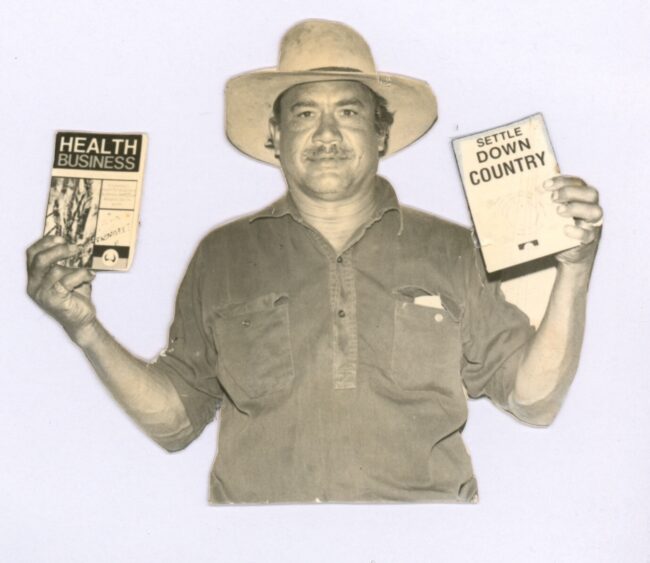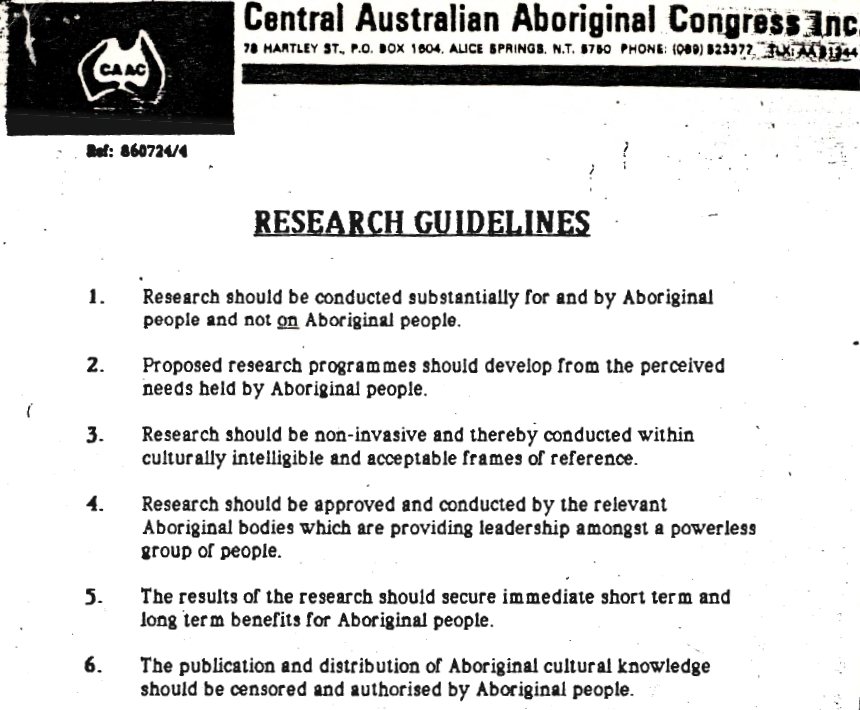Nhenhe unte areme photo ante pipe mape Congress Arrurlenye-ntyele. Congress-le alhengke areme tyerrtye apmere arenye mape ante tyerrtye arrpenhe areye. Mwantye-le araye photo nhenhe mape tyerrtye-itethe-kwenye mape-arlke.
Here you can see photographs and documents from the history of Congress. Congress pays respect to traditional owners and to the wider community. Be mindful that these pictures may include deceased people.
Congress has worked for many decades to improve the way that research is done in central Australia. Wisdom, advice and advocacy about good ways to do research has come from listening to what community people say.
Congress first gave advice to researchers in 1982. Congress CEO John Liddle and Deputy CEO Barb Shaw recommended six guidelines (pictured) for future research into Aboriginal matters. These were based on experience from two Congress research projects: Health Business and Settle Down Country: Pmere Arlaltyewele. The researchers, Pam Nathan and Dick Lechleitner Japanangka (pictured with these published research books), had listened to the knowledge and experiences of Aboriginal people in many places in central Australia about health and why country is important.
Congress sent these research guidelines to the Australian Institute for Aboriginal Studies (now AIATSIS) in Canberra and arranged for them to be presented at the Australian Anthropologists Association conference in Sydney. Four years later there was a national conference in Alice Springs on improving Aboriginal health. Aboriginal delegates spoke about the need for better research practice. They led the conference to recommend that the National Health and Medical Research Council develop ethical guidelines for health research involving Aboriginal people.
The Congress guidelines were a landmark in the struggle for Aboriginal empowerment in many fields of research. Dr Jocelyn Davies, a geographer who now works with the Congress Arrurlenge (History Project), says she didn’t know about Congress in 1990 when she first read the guidelines. She said “Back then, the Congress guidelines were unique and they were a beacon. They showed me what I needed to learn. They are still relevant. They still point to what is important for good research.”
Congress recently built on its experience with guidelines for research through the Doing It Right (Aremella Arratyenye-ileme) Research Project. Late last year Congress published this new guide for researchers on how to work safely, respectfully and appropriately in research in Central Australia. Once again, this guidance has come from listening to community members’ experiences, expectations and cultural protocols.

Mr Dick Lechleitner Japanangka in 1983 with books from his research with Pam Nathan for Congress. Name and image used with permission of a son of Mr Lechleitner.
